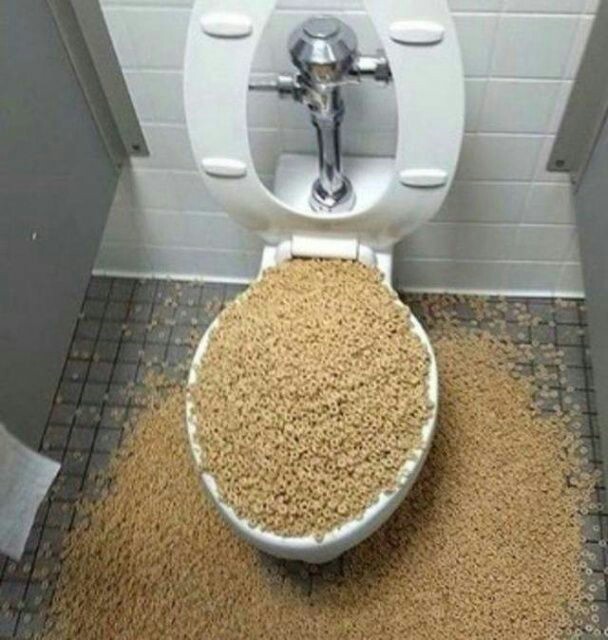We have come across this article about Flushing Food Down the Toilet? directly below on the internet and accepted it made sense to share it with you in this article.

Introduction
Lots of people are usually faced with the dilemma of what to do with food waste, particularly when it involves leftovers or scraps. One usual concern that arises is whether it's okay to flush food down the commode. In this write-up, we'll delve into the reasons individuals could consider flushing food, the effects of doing so, and alternate techniques for appropriate disposal.
Reasons individuals could take into consideration purging food
Lack of recognition
Some people may not know the possible harm brought on by flushing food down the commode. They may mistakenly think that it's a harmless technique.
Convenience
Flushing food down the commode might feel like a quick and easy remedy to dealing with undesirable scraps, especially when there's no close-by trash bin offered.
Idleness
In some cases, individuals might merely choose to flush food out of large negligence, without thinking about the consequences of their activities.
Repercussions of flushing food down the toilet
Environmental effect
Food waste that ends up in rivers can contribute to pollution and harm water ecological communities. Furthermore, the water used to flush food can strain water sources.
Pipes issues
Purging food can cause clogged up pipelines and drains pipes, creating costly pipes repair services and inconveniences.
Types of food that must not be purged
Coarse foods
Foods with fibrous textures such as celery or corn husks can get tangled in pipes and trigger clogs.
Starchy foods
Starchy foods like pasta and rice can absorb water and swell, causing obstructions in pipelines.
Oils and fats
Greasy foods like bacon or cooking oils should never be flushed down the bathroom as they can solidify and create blockages.
Proper disposal methods for food waste
Making use of a waste disposal unit
For homes outfitted with waste disposal unit, food scraps can be ground up and flushed via the pipes system. Nevertheless, not all foods are suitable for disposal in this fashion.
Recycling
Certain food packaging products can be reused, minimizing waste and minimizing ecological impact.
Composting
Composting is a green means to throw away food waste. Organic products can be composted and utilized to enrich soil for gardening.
The relevance of appropriate waste monitoring
Minimizing environmental injury
Correct waste management practices, such as composting and recycling, help minimize contamination and preserve natural deposits for future generations.
Securing pipes systems
By staying clear of the technique of flushing food down the toilet, home owners can avoid expensive plumbing fixings and preserve the integrity of their pipes systems.
Conclusion
Finally, while it might be appealing to flush food down the bathroom for ease, it is essential to recognize the possible effects of this activity. By taking on proper waste monitoring methods and dealing with food waste sensibly, people can contribute to healthier pipes systems and a cleaner setting for all.
FLUSH FOOD DOWN THE TOILET?
FLUSHING FOOD CAN CAUSE BLOCKED DRAINS IN YOUR HOME
All of the plumbing fixtures in your home are connected to the same sewer pipe outside of your home. This outdoor sewer pipe is responsible for transporting all the wastewater from your home to the Council sewer mains. Even small pieces of food that go down the kitchen sink can cause problems for your sewer. It should therefore be obvious that flushing larger bits of food, such as meat, risks a clog in either the toilet itself or the sewer pipes. Flushing greasy food is even more problematic because oil coagulates when it cools, coating the interior lining of your pipes.
THE TOILET IS NOT A BIN
Food isn’t the only thing that people shouldn’t be flushing down the toilet. People use the toilet to dispose of all kinds of things such as tampons, makeup wipes, dental floss, kitty litter and even underwear. Water goes to great lengths to educate residents about the high costs and stress placed on wastewater treatment systems simply from people flushing the wrong stuff down the toilet. It costs taxpayers millions of dollars each year, and homeowners thousands in blocked drain repairs.
FLUSHING FOOD IS A WASTE OF WATER
Flushing food is a waste of our most precious resource - water. In June this year Level 1 water restrictions were introduced to protect water supply from drought conditions. Much of New South Wales continues to be affected by prolonged drought with recent figures revealing up to 97 per cent of the state remains in drought. Depending on whether you have a single or dual flush toilet, every single flush uses between five and 11 litres of water. In the current climate this is a huge amount of water to be wasting on flushing food that should be placed in the bin (or better yet, the compost).
https://www.jabplumbingsolutions.com.au/blog/can-you-flush-food-down-the-toilet

I'm certainly very serious about and I'm hoping you liked our blog entry. Sharing is good. Helping others is fun. I value your readership.
Call Today